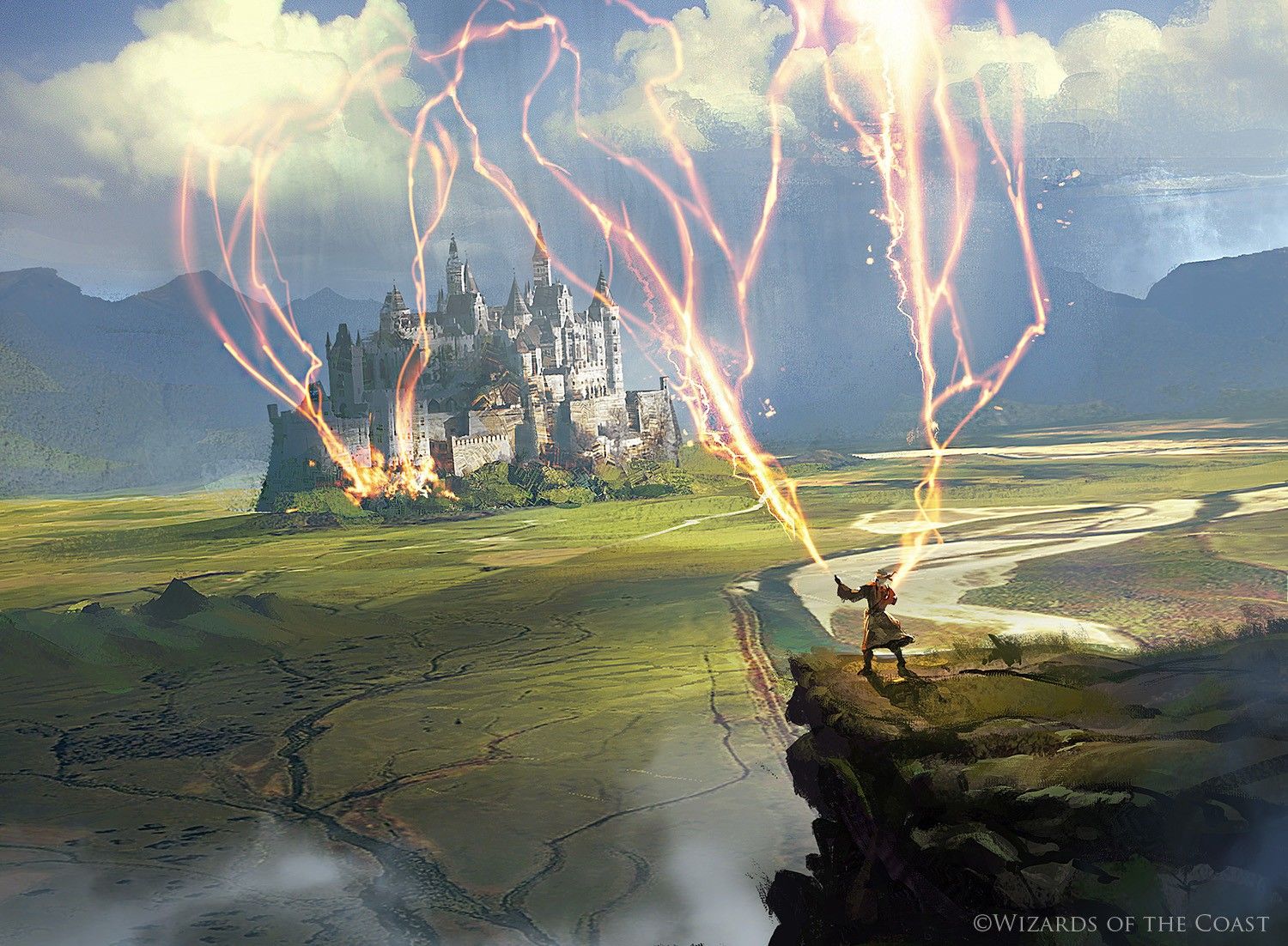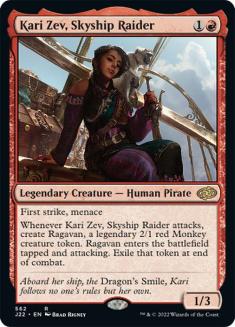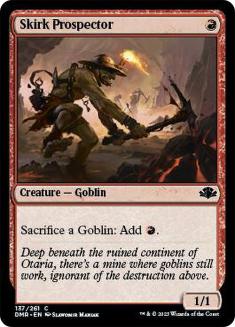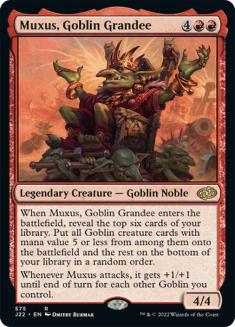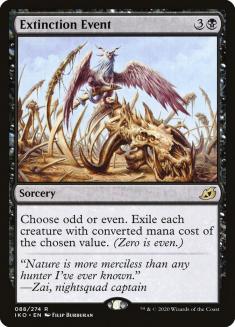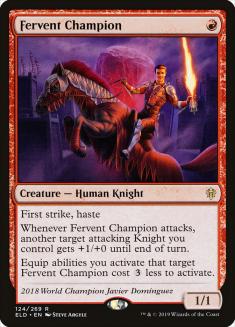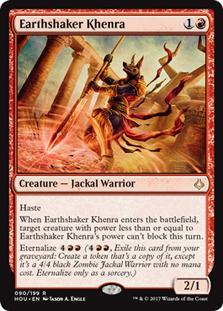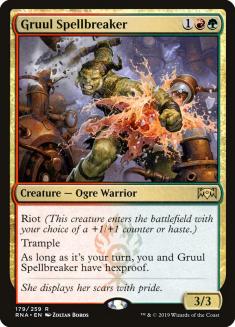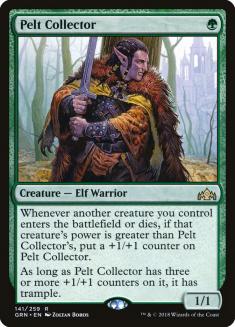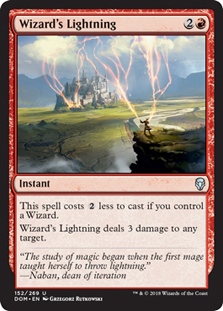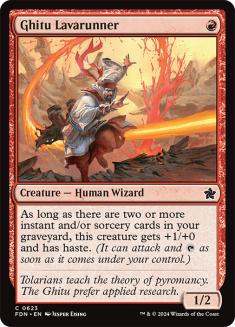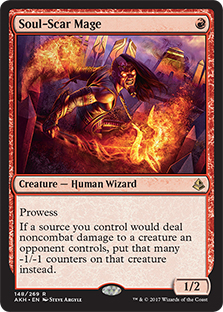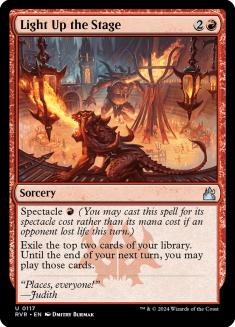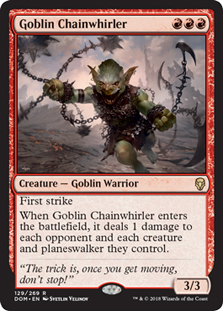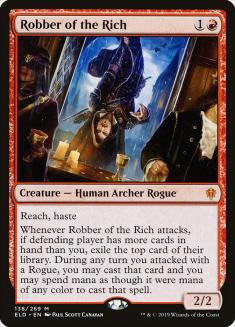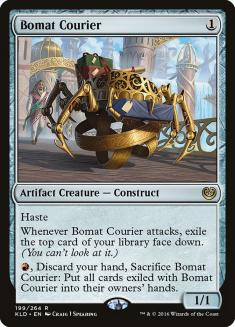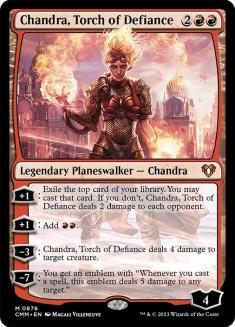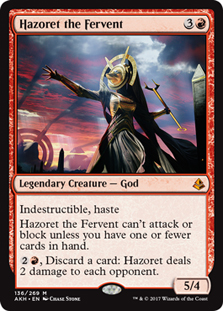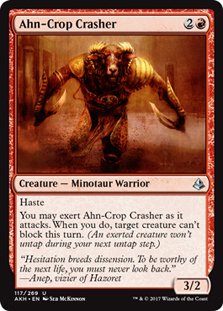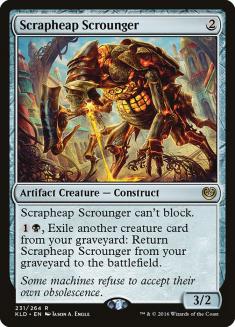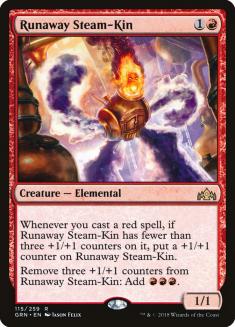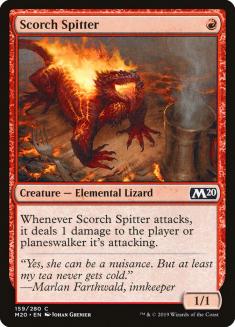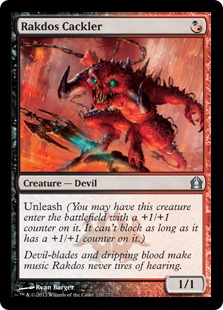Amid all the hype over additions like Aetherworks Marvel and Winding Constrictor, a deck that has gained a ton of metagame momentum from Kaladesh Remastered is simply Mono-Red Aggro.
A number of high-profile players are promoting a traditional burn and creatures list. Fitting the recent additions of Amonkhet Remastered and Kaladesh Remastered to Historic, these decks look a lot like the one Paulo Vitor Damo da Rosa used to win Pro Tour Hour of Devastation three years ago shuffled together with the eighteen-land Mono-Red Aggro deck from Magic 2020 Standard – a red deck from the previous era of Magic design.
Creatures (29)
- 4 Burning-Tree Emissary
- 4 Bomat Courier
- 3 Kari Zev, Skyship Raider
- 1 Hazoret the Fervent
- 2 Goblin Chainwhirler
- 4 Robber of the Rich
- 4 Fervent Champion
- 3 Bonecrusher Giant
- 4 Anax, Hardened in the Forge
Planeswalkers (2)
Lands (22)
Spells (7)

But in event results, we see almost all Embercleave. Stacks of creatures, minimal burn, and lots of cards currently in Standard. Big individual threats, single-card haymakers, and all the low-cost creatures are filler bodies that exist to reduce the cost of Embercleave. That last point peaks with Burning-Tree Emissary, which just maximizes your broken Turn 3 Embercleave draws.
So, Which Is Better?
I won’t mince words.
Embercleave Red is unplayable in Historic.
Wizard’s Lightning Red is pretty darn good.
The why is the more interesting part.
You can boil this down to two cards being bad: Kari Zev, Skyship Raider and Anax, Hardened in the Forge. With the current builds of Embercleave Red, so much of your deck is focused on the inclusion of these cards. Kari Zev represents something to sink your Burning-Tree Emissary mana into, and also two bodies for fast Embercleaves. Anax is both the biggest thing you can load an Embercleave on and a way to mitigate sweepers.
And both are terrible in Historic.
You can point to the structural overlap between Embercleave Red and Mono-Red Goblins. Both are just piles of creatures with a big finisher and some tools along the way, but there’s really no way to argue Embercleave is better than Muxus at this job. It’s a smaller swing when trying to recover from behind, it almost requires a larger threat on the battlefield as opposed to just mana, and if your opponent does trade down the line with your cards Embercleave doesn’t bury them in numbers.
You can point to specific line-ups of commonly played answers. Investing in two-drops in a Fatal Push format is just asking for tempo blowouts. Clustering your curve at one-drops and three-drops also leaves an aggro deck vulnerable to Extinction Event, which is probably the most-played sweeper in the format and outright ignores Anax. Add in Anger of the Gods and Settle the Wreckage as other relatively common cards, and the idea of Anax meaning anything is less and less likely.
But really, it’s an issue of scale. I kept playing Embercleave Red and knowing I had no chance in games because my play would be immediately overwhelmed by my opponent’s obvious next play. Maybe not always on the play, but every game on the draw you would be facing down Growth Spiral into Nissa, Who Shakes the World with your doofy blockable Anax and it wouldn’t be remotely close. The same applies to a ton of broken plans, since Historic seems to have a critical point around Turn 4. That’s when Aetherworks Marvel gets activated, when Collected Company gets cast, and when Phyrexian Tower into Gate to the Afterlife or just a Refurbish tends to power out a God-Pharaoh’s Gift.
I don’t know if I’ve ever seen it directly stated this way, but whenever you are building an aggro deck, this is a metric you should observe. What is the window where this threat is going to matter against a generic opponent on the draw before it gets eclipsed by the next tier of threats? If your cards are getting quickly outclassed without being able to leverage them, what are they doing in your deck?
Down the line, the entire Embercleave Red deck is horrendous at this. Any two-toughness two-drop blanks your one-drops. Basically any action taken blanks your two-drop 2/1 and 2/2 bodies. People are playing Goblin Instigator; what’s your big plan with Earthshaker Khenra?
If you want to play an Embercleave deck, Gruul Aggro does this much better. Pelt Collector scales up, the 4/4 or larger three-drops battle through things a level bigger a little better than just Bonecrusher Giant, and Collected Company gives you more plays to fire back bigger than an opposing threat.
So what makes Wizard’s Lightning Red any different?
One-drops. Lots of one-drops. And the Philosophy of Fire.
Wizard’s Lightning Red is a traditional Mono-Red Aggro deck, and it follows traditional principles. It is trying to win by converting each card into the maximum amount of damage. Instead of trying to figure out what cards can compete in the Turn 4 broken stuff metagame, it wins by loading up on one-drops and deploying everything it can before Turn 4. While your opponent can make some broken Turn 4 play, you can just throw raw cards at them to push the last damage you need to close out. Rather than having one or two random bodies when their Nissa untaps a land to brick combat for a turn, you will enter combat against that land with three or four threats, perfectly fine throwing away one of them to push the other six damage through.
You are admitting from the start you can’t beat the threats that are dominating the Embercleave Red deck. You are just deciding to play a different game from those cards as a result.
Building and Playing the Best Red Deck
It’s early enough in the Kaladesh Remastered era of Historic that I don’t think we have optimized Mono-Red Aggro, but let’s take another look at Grzegorz’s initial list and talk through what is good and what might need another look.
Creatures (22)
- 4 Bomat Courier
- 2 Hazoret the Fervent
- 4 Soul-Scar Mage
- 2 Earthshaker Khenra
- 4 Ghitu Lavarunner
- 4 Viashino Pyromancer
- 2 Robber of the Rich
Planeswalkers (2)
Lands (17)
Spells (19)

The most important aspect of this list is only including three-drops for very specific sideboard roles. The generic role of “three-drop” isn’t one you need because it’s just a card likely to get immediately outclassed, but a lot of the good red three-drops are really hate cards with a body. Rampaging Ferocidon versus Roiling Vortex certainly up for debate, but Goblin Chainwhirler’s effectiveness really isn’t. Like I said, people are playing Goblin Instigator, and you have to teach them a lesson.
If I talked all this trash about the haste two-drops being mediocre, what are they doing in the deck? Well, neither is a great card and I can see wanting a small number of Grim Lavamancer or Fanatical Firebrand just to lower the curve. But throwing haste creatures at your opponent’s stuff has significant returns in this deck since you overwhelm blockers, so running a couple of these two-drops is fine.
I’ve been aggressively sideboarding these two-drops out on the draw, along with Bomat Courier, when they are likely to get outclassed one step up the curve. This is the other role Goblin Chainwhirler plays, since the decks where these small creatures get rapidly outclassed by something like Burning-Tree Emissary are also matchups where your opponent is less likely to have something like Nissa or Uro, Titan of Nature’s Wrath that cleanly slams the door given some time. If you have to play a slightly controlling role against another creature deck, a 3/3 first strike just threatens to give you good combat steps in either direction. Even against 4/4s, that can extend games and let you leverage your cards for something other than just being outsized from the start.
I’m torn on the application of four-drops. I keep bringing up Nissa, Who Shakes the World, but neither Chandra, Torch of Defiance or Hazoret the Fervent quite stands up to that card. This is just basic math, because cards printed in 2019 and 2020 have a year that’s a larger number than 2016. Or Aetherworks Marvel, or any of the other cards I listed off. If you cut the four-drops from the maindeck, you could trim a land from the deck and just have even more spells every game to chuck at your opponent. But in the matchups I mentioned Goblin Chainwhirler being a key combatant in, you want these high-impact threats to let you use burn spells on creatures instead of your opponent’s face and still have something to close out.
I think I would be looking to trim one or two of these cards overall, cut a Shatterskull Smashing, and move the extras to the sideboard. Honestly, I’m not even sure Shatterskull Smashing is better than a basic land in this deck, but both the damage and casting the spell come up so rarely it’s hard to tell either way.
What Could Make Embercleave Playable?
I don’t think the current issues with Embercleave Red are permanent or unfixable. What could we do to make the deck closer to playable now, and what cards could randomly join Historic to make it good in the future?
While Embercleave Red is basically forced to play a full curve of creatures due to needing body count and size to enable Embercleave, you can do better than the current selections. If the issue is getting negated by the next play up the curve, Ahn-Crop Crasher seems like a notable upgrade. Your opponent’s Elemental land or just an Uro body can be ignored and you have a real window to push lethal through a threat.
This is also where I would stop my curve. Full-curve decks don’t support Hazoret well, and every Chandra you draw is actively bad. Maybe you sideboard a couple in to diversify your threats, but I wouldn’t.
I want to make better two-drop decisions, focused more on providing sizeable bodies that don’t get outclassed and carry Embercleave well. This also helps insulate the deck against Extinction Event, even if these cards still die to Fatal Push. Splashing Scrapheap Scrounger off minimal black sources conflicts a bit with Runaway Steam-Kin, but looking through the list of legal cards these are the two that stand out the most.
The main reason I would drop either of these is if the deck wants to go full Standard with Torbran, Thane of Red Fell, at which point Scrapheap Scrounger has to go. Adding Dragonskull Summit to your deck also requires you to cut down on the value lands like Ramunap Ruins, which may or may not be a cost. This deck is already bad when it floods out early and bad if the game goes late, so I’m unsure those lands are gaining relevant percentage anyway. This may be much more viable after Kaldheim brings the Rakdos-colored Pathway.
Just to prevent any reader mishaps, Kargan Intimidator is unplayable in this format too. It doesn’t get better as you add cards to the format.
The unfixable deficit is the one-drops. Fervent Champion is really bad, and it’s really bad in the same ways that Bomat Courier can be really bad some games. Your opponent casts a 2/2, and your one-drops are handled. Wizard’s Lightning Red has good one drops in Ghitu Lavarunner and Soul-Scar Mage, but those are just not supported if you are loading up on creatures for Embercleave. As much as I love Scorch Spitter, it has the same issue as the other 1/1s. Yet again you need something bulkier, and that just doesn’t exist in the format outside of yet again unsupported cards like Daring Buccaneer. If a one-drop two-power creature is printed in Kaldheim or some special Arena release, that would immediately reinterest me in Embercleave Red.
If you want to keep trying to make Embercleave Red work, I would start here.
Creatures (30)
- 4 Burning-Tree Emissary
- 4 Bomat Courier
- 4 Scrapheap Scrounger
- 1 Hazoret the Fervent
- 4 Ahn-Crop Crasher
- 4 Runaway Steam-Kin
- 4 Fervent Champion
- 4 Bonecrusher Giant
- 1 Rimrock Knight
Lands (21)
Spells (9)

Honestly, the biggest thing holding Mono-Red Aggro back in Historic might be the abundance of options. Maybe this weekend the Mono-Red deck of choice will be Goblins, but I don’t expect it to remain the only red deck winning.

